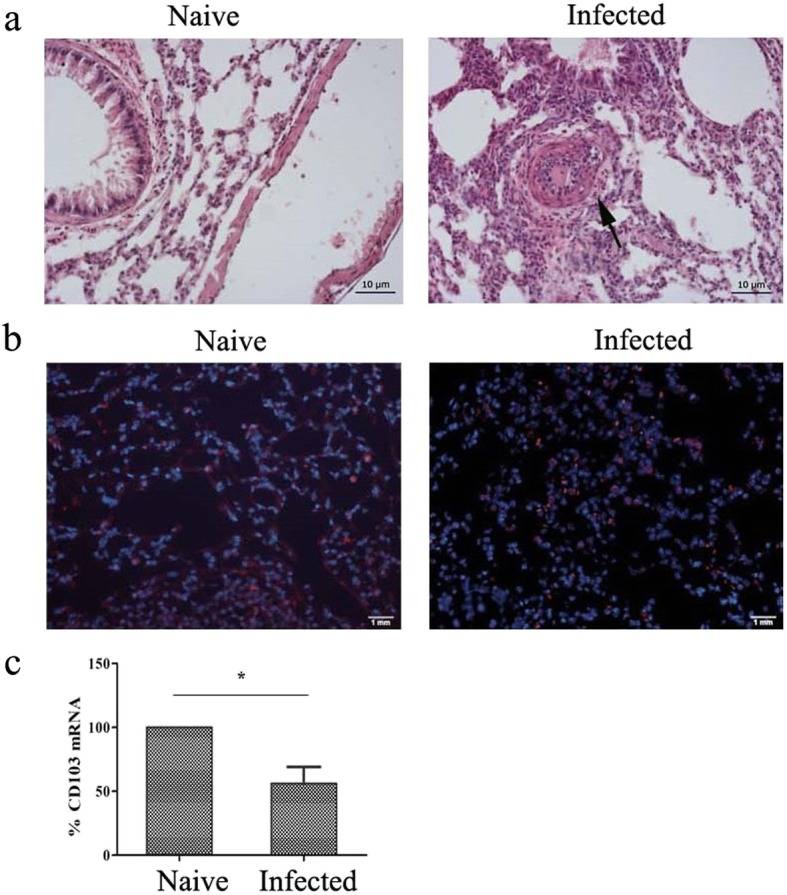Fig. 1.

Pathological changes and CD103 expression change in the lungs of infected mice, and distribution of CD103+ T cells in infected mouse lung tissue. Mice were percutaneous infected by S. japonicum. 5–6 week later, lungs were picked out. (a) Hematoxylin and eosin staining was performed on paraffin sections of lung tissue of infected mice. Observing the pathological changes of lung tissue at 20 times mirror, black arrows showing a egg granuloma. Lung tissue sections from naive mice were used as control. (b) Fluorescence staining was performed on frozen sections of lung tissue of naive and infected mice. CD103 is indicated by red fluorescence (Alexa Fluor 647, Red), whereas nuclei are visualized using DAPI staining (Blue). A representative result of three independent results is shown. (c) Total RNA of lung tissues from both naive and infected mice were extracted, cDNA was synthesized, and fluorescence quantitative PCR was performed to identify the expression of CD103 gene. Results expressed as percentage of gene expression to the same genotype. Data was from three independent experiments with 5 mice per group and shown as mean ± SEM. Variable of the data was analyzed by Tukey’s HSD. * for P < 0.05
